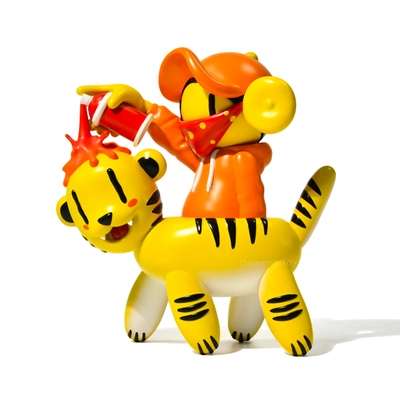
Explore the dynamic realm of bespoke action figures and unlock creative possibilities!
Beyond simple acquisition, it's an art of bringing imagined heroes into tangible reality.
Whether you're a seasoned hobbyist or a curious creator, this guide will equip you with tools and techniques to start selling custom figures.
Learn how to pick base figures, sculpt unique additions, and paint for a professional custom-figure result.
- Commence by outlining the figure’s story, target buyers, and the production approach.
- Sharpen painting methods including masking, airbrush gradients, and careful sealing for longevity.
- Experiment with sculpting and modifications: add bespoke armor, faces, or props to stand out.
- Upload high-quality photos and listings, offer limited runs, and engage communities to monetize creations.

Make & Market: DIY Action Figures for Hobbyists and Sellers
Begin an exciting creative path to design custom figures that resonate with collectors and retail buyers.
- Kick off with a detailed character brief—look, lore, and target buyer—to shape design choices.
- Develop precise character sketches for consistent sculpting, molding, and display photography.
- Prepare workbench supplies: putty, sculpt tools, adhesives, and a selection of paints and varnishes.
- Model details carefully—faces, fabric folds, armor texture—to elevate perceived value.
- Practice layering, contrast modulation, and final sealing to secure paint longevity and resale value.
Custom Conversion Techniques for Unique Action Figures
Want to make standout pieces? Apply modification techniques to craft sellable custom figures.
Pick a base that supports the changes you envision and sketch modifications to maintain proportions.
* **Sculpting:** Use epoxy putty to add and repair parts, creating durable custom features.
* **Painting:** Paint with patience—prime, glaze, and seal to Custom Action Figure create photos and sales-ready finishes.
* **Accessories:** {Get creative with found objects and spare parts to craft unique weapons and stands.|Repurpose tiny components and kitbash parts to create distinctive props and display bases.|Combine printed parts, metal bits, and kitbashed pieces for specialty accessories.|Use 3D-printed or scratch-built accessories to increase perceived value and uniqueness.|Craft accessories from small-scale materials or print custom items to enhance desirability.|Invent accessories by converting everyday items into miniature props that pop on shelves.|Design removable and interchangeable accessories to offer collectors customization options.|Produce themed accessory sets that pair with figures to boost bundle sales and interest.|
Figure Production Essentials: Turning Sculpt into Product
The process moves from hand-sculpted prototype to CNC tooling and efficient production workflows.
Molded parts are cleaned, painted, and assembled with precision to meet collector and safety standards.
Collectors prioritize narrative fidelity, precise sculpting, and durable production when selecting figures.

Custom Figure Artistry: Sculpting and Design Fundamentals
Exceptional custom figures combine emotive design with precise sculpting, molding, and painting.
Consistent process control, from design to varnish, turns individual customs into reliable saleable items.
Five Tools That Transform Your Customizing Workflow
- Fine miniature cutters and blades for smooth separation and trim work.
- A comprehensive set of acrylics and inks suited for fine figure painting.
- A set of micro-detail brushes for line work, pupils, and edge highlights.
- A carving and trimming knife that offers control across various modeling media.
A Guide to an Action Figure
Explore the core components—from frame to finish—that define a collectible action figure.
Begin with the main torso and shell, which can be molded from ABS, PVC, or resin for strength.
Next the skeleton or internal framework provides poseability via joints and articulated connectors.
Character accessories, from capes to armor, provide narrative context and merchandising value.
Finish work—painting, weathering, and sealing—creates the final visual impact for collectors.
Master Painting: Finish Techniques for Custom Action Figures
Start finishing by addressing imperfections, smoothing joins, and applying a suitable primer coat.
Consider contrast, saturation, and lighting when choosing colors, and thin paints for smooth coats.
Top-coat selection impacts presentation—pick sealers that suit the figure’s aesthetic and handling needs.
Artist Spotlight: Interviews with Leading Figure Sculptors
Get insider perspectives on technique, business, and inspiration from seasoned figure artists.

Action Figure Collectors Unite!
Attention collectors: display vintage and custom pieces, trade tips, and join competitions.
Participate in gatherings that honor craftsmanship—display dioramas, trade parts, and compete.
- Join an international collector network to trade items, commission pieces, and collaborate on builds.
- Access video guides, workshop notes, and forum tips to refine techniques and display practices.
- Join competitions to validate techniques, build reputation, and expand your collector audience.
No matter your level, the custom-figure community offers mentorship, inspiration, and markets for sales.
Find the Right Partner for Figure Production
Pick manufacturers based on detail reproduction, material handling, and responsiveness to custom specs.
- Explore manufacturers’ portfolios to spot specialties and match them to your project needs.
- Focus on sample scale accuracy, joint strength, and the overall fit-and-finish of prototypes.
- Emphasize manufacturers who can source premium plastics, resins, and paint systems for collectibles.

Work with factories that align with your quality standards to protect brand reputation and margins.